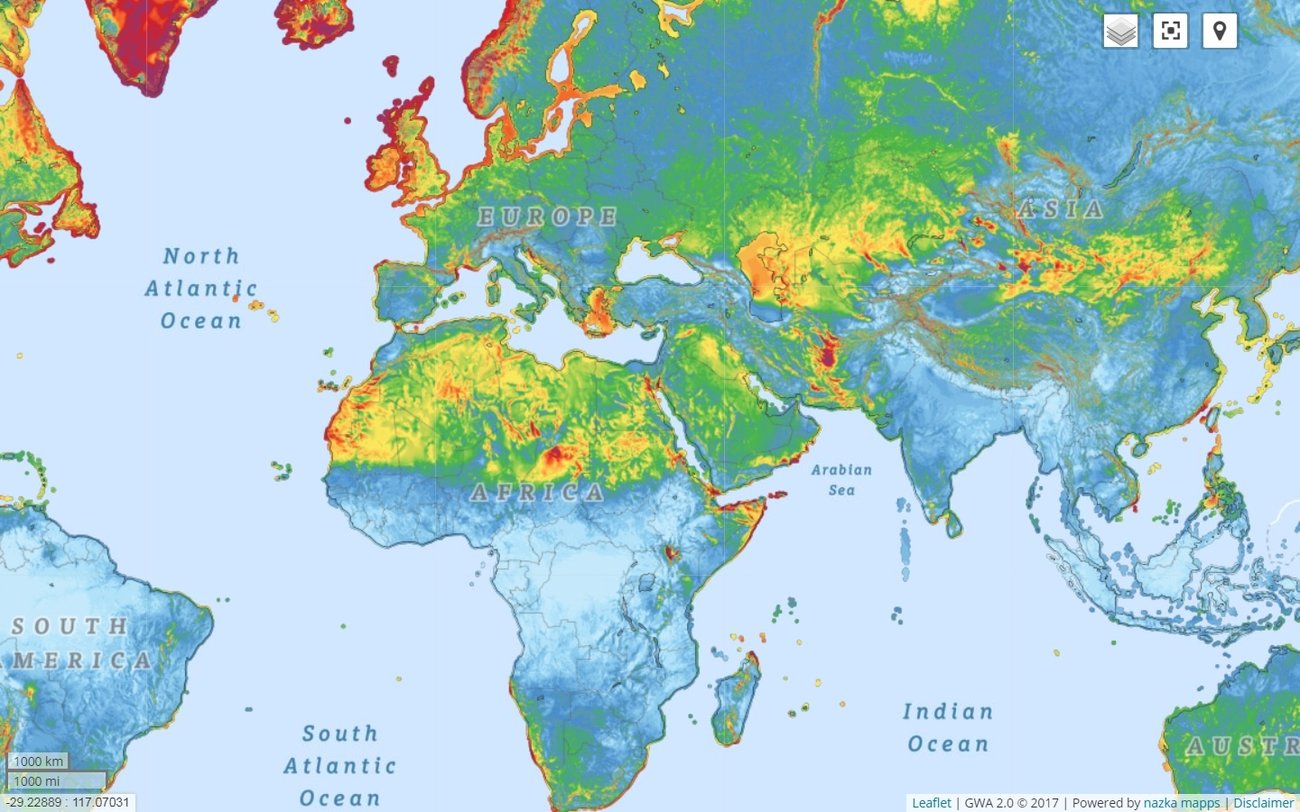Leading commercial provider of wind resource model data, Vortex, has played a key role in the development of the recently launched Global Wind Atlas 2.0 (GWA 2.0). The GWA is a web-based platform to explore wind resources through an interactive mapping and data tools. GWA was the product of a partnership between the World Bank and the Technical University of Denmark (DTU) to help policymakers and investors identify promising areas for wind power generation. Vortex was called upon to carry out a global mesoscale modelling simulation at 9km resolution which enabled the wind atlas downstreaming to obtain the final wind information layers
“The second-generation Global Wind Atlas is a powerful platform to boost wind resource hunting in future markets, especially in targets areas in Africa, Asia, the Pacific and Latin America,” comments Pau Casso, Vortex Technical Director. It was unveiled at the recent Wind Europe Conference in Amsterdam and, according to the World Bank, will help governments save millions of dollars by avoiding the need for early-stage, national-level wind mapping.
“There is great scope in many countries for the clean, low-cost power that wind provides, but they have been hampered by a lack of good data,” explains Riccardo Puliti, Senior Director and Head of the World Bank’s Energy & Extractives Global Practice. “By providing high quality resource data at such a detailed level for free, we hope to mobilise more private investment for accelerating the scale-up of technologies like wind to meet urgent energy needs.”
Barcelona’s industry leading mesoscale modellers, Vortex, won a contract with the World Bank Group to prepare maps of the world’s wind resource in greater detail than ever before by enhancing the previous iteration of the Global Wind Atlas (GWA 1.0) with 9km mesoscale modelling of the entire globe.
“Behind the GWA, there is a very smart project specification list which brings together probably the most robust modelling solution at mesoscale and microscale: Vortex and DTU” outlines Pau Casso. “GWA was another example of how Vortex can optimise computing resources. We needed to model the world at a 9km resolution, and to do so we distributed our Weather Research and Forecasting (WRF) runs across 320 tiles to cover the entire globe.”
“Another challenge was to feed our WRF model output into the wind climate generalization procedure. In the end, the best option was to run everything at our cluster in Barcelona to improve the efficiency of the whole modelling chain – the entire process took about four months,” adds Vortex’s Wind Meteorologist, Albert Bosch i Mas.
R&D Director at Vortex, Gil Lizcano, describes the atlas as “chalinging modeling work as the specification and timings requires us to be very effective and smart”, drawing on the ever-improving input data and modelling innovations at Vortex. “We loved that the GWA wants to grow: it is an evolving platform. At Vortex, we understand that technology is not a frozen solution, but is ever changing. Our role is also to integrate the changes and understand what comes next and when it should be available for end users”.
Vortex’s mesolayer is available at www.interface.com



No Comment